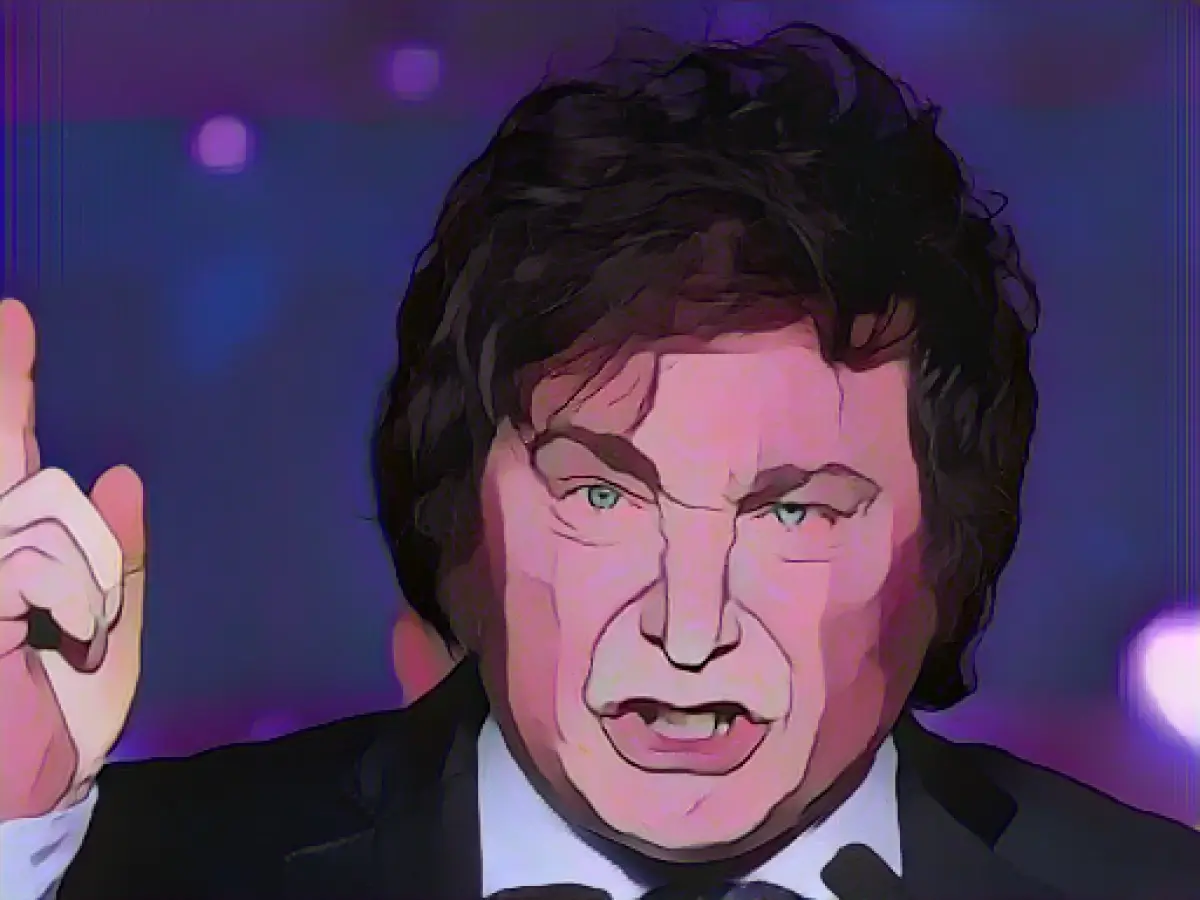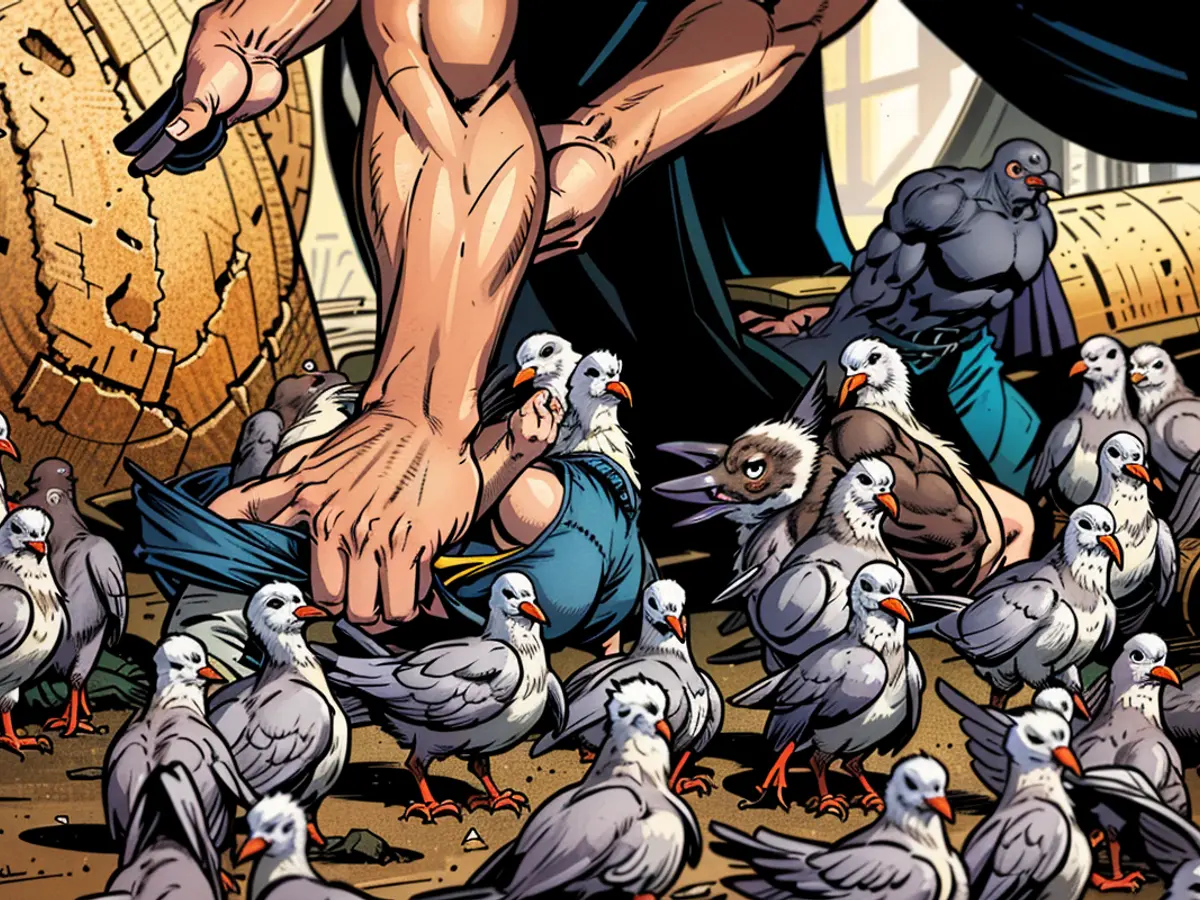Dollar instead of peso: Milei's controversial plan for Argentina
The newly elected Argentinian President Javier Milei wants to impose a radical cure on the crisis-ridden country. In addition to a massive cut in social spending and the abolition of the central bank, the introduction of the US dollar as legal tender is one of the cornerstones of his economic policy program.
"We will dollarize the economy. We will close the Federal Reserve. We will defeat the cancer of inflation," promised the ultra-liberal populist in a TV debate before the election.
What are the advantages and disadvantages of introducing the dollar?
Argentina is currently suffering from an inflation rate of over 140 percent. In order to finance the budget deficit despite the devaluation of the currency, the government is constantly printing new money, which further fuels inflation. This would no longer be possible with the dollar as the official means of payment, argues Milei. According to proponents, dollarization would provide Argentinians with a stable currency. However, the country would then no longer be able to react to external shocks with monetary policy and, for example, devalue the peso as the national currency in order to gain a competitive advantage on the global market.
What would a dollar introduction in Argentina look like?
In order to introduce the US dollar as legal tender in Argentina, Congress would have to pass a corresponding law. However, Milei's party La Libertad Avanza (Freedom Advances) does not have its own majority in either chamber. The future president would therefore have to get MPs from other parties on board for his project. In addition, experts estimate that Argentina would need around 35 billion US dollars for the currency reform to replace the peso in circulation. However, the central bank currently only has small foreign currency reserves and is largely cut off from the regular financial market due to the high level of debt and desolate economic situation.
What role does the dollar currently play in Argentina?
The dollar already plays an important role in the lives of many Argentines. As inflation would eat up savings in pesos within a very short time, many Argentines invest any surplus pesos in dollars. No other country in the world outside the USA has as many dollar notes in circulation as Argentina. According to estimates, Argentinians own 200 billion US dollars in cash. That is 10 percent of all dollar bills in circulation worldwide - and 20 percent of all dollars outside the United States.
What do experts say about Milei's dollarization plans?
The introduction of the dollar in Argentina is controversial among experts. "Dollarization is desirable and feasible," said US economist Steve Hanke from Johns Hopkins University at a recent conference in Buenos Aires. Claudio Caprarulo from the consulting firm Analytica, on the other hand, warns of high social costs. "Dollarization exacerbates the problems instead of solving them," he recently wrote on the news platform X, formerly Twitter. He warned of falling wages, rising unemployment and less room for maneuver in monetary policy.
Dolarizar es profundizar los problemas, no resolverlos. La Convertibilidad, entre otras cosas, rompió el mercado de trabajo y dejó cicatrices que aun no cierran en el entramado social. Hay un consenso bastante amplio al respecto. Difícil de entender la romantización de los 90s. pic.twitter.com/DEVaU7ssTf
— Claudio Caprarulo (@ClauCaprarulo) August 22, 2023
How did the introduction of the dollar work in other countries?
There are already a number of examples of dollarization in the region. In the midst of a severe economic and financial crisis with high inflation and a strong devaluation of the national currency Sucre, the Ecuadorian government introduced the US dollar as the official means of payment in 2000. The Ecuadorian economy did indeed recover in the years that followed. According to experts, however, this was not solely due to the adoption of the dollar, but also to rising revenues from oil exports and higher remittances from emigrated Ecuadorians back home.
One year later, the Central American country of El Salvador also adopted the US dollar as its official currency - although, unlike Ecuador, it was in a fairly stable economic situation. After dollarization, interest rates fell, which led to savings in the public and private sectors. However, the previous national currency, the colón, had already been pegged to the dollar for several years via a fixed exchange rate.
Source: www.dpa.com








